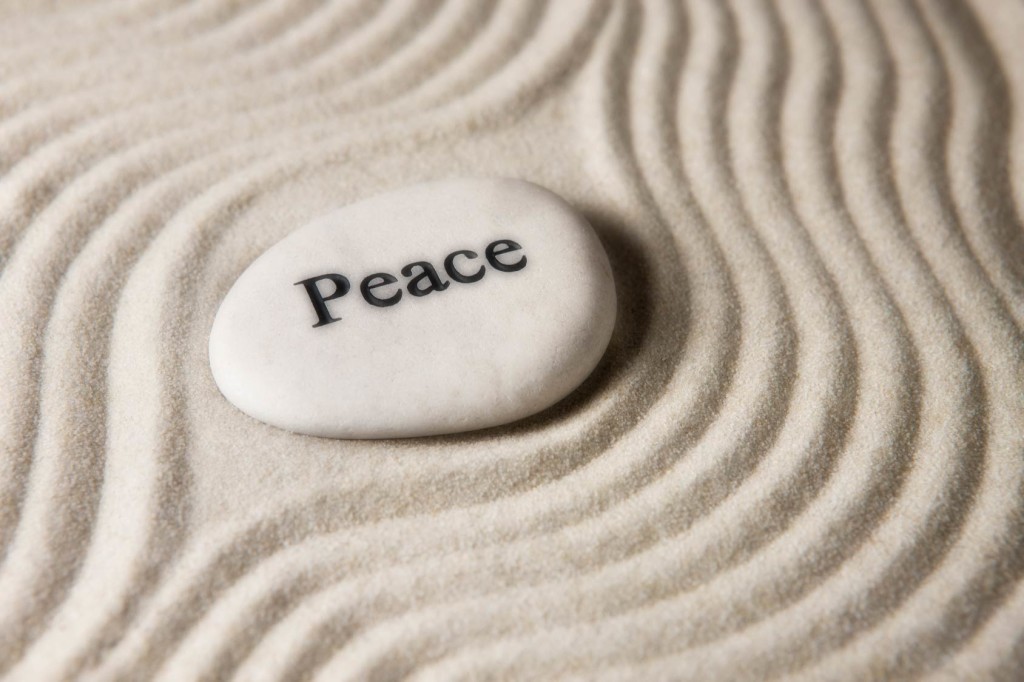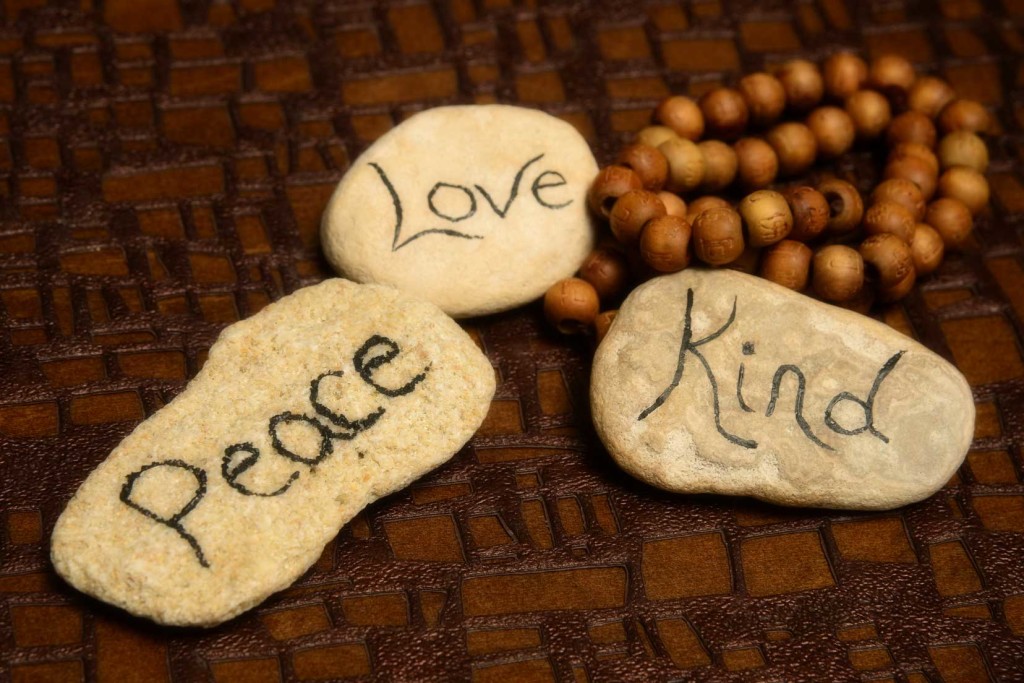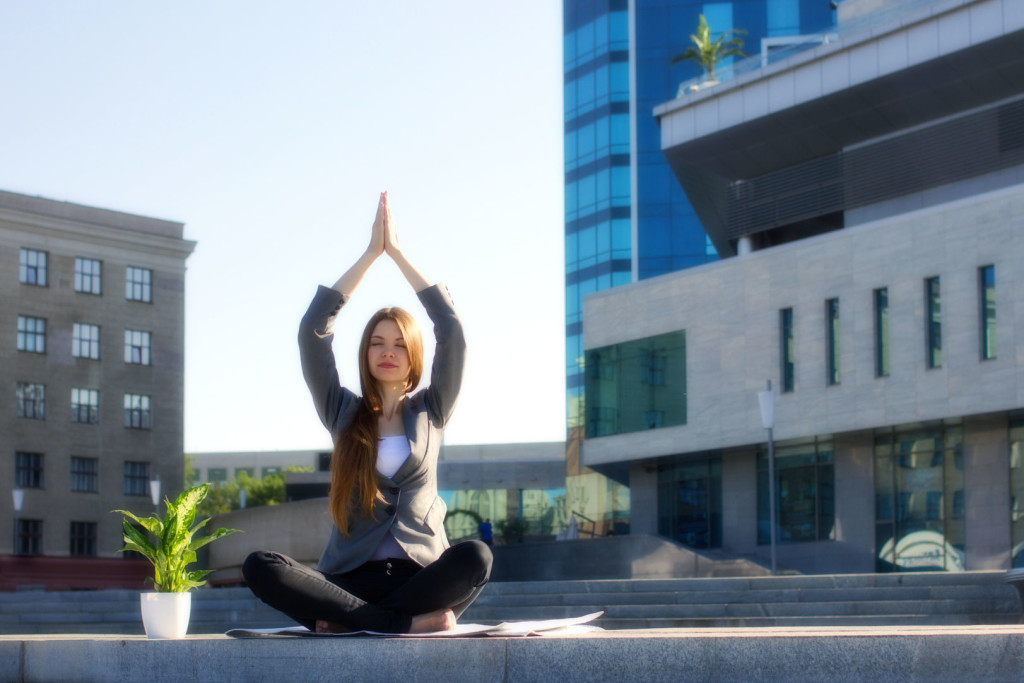How To Transmute Negative Energy With Tonglen Meditation
Suffering is one of the undeniable facts of life that motivate our spiritual practice.
It was coming face-to-face with aging, illness and death, that inspired the Buddha to leave his palace and his family behind, and set out on the path of awakening.
In a sense, the story of Siddhartha Gautama is a metaphor for all of us. We begin the spiritual search because we are not content with material life. Worldly pleasures do not make us happy, only more and more hungry and disillusioned.
Through study and meditation we seek to find an answer, a solution to our own suffering, as well as a way to relieve the suffering we see in the world around us.
The practice of Tonglen meditation offers us both at once.
History of Tonglen
Tonglen is a Tibetan word which means “giving and taking.” As a spiritual practice, it refers to the sending and receiving of energy; taking in the negative (pain, suffering, fear, etc.) and giving back the positive (peace, joy, comfort, well-being).
The practice can be traced back to 11th century Tibet, and the Kadampa school of Buddhism founded by Dromton Rinpoche. Dromton credits his teacher, Atisha, with training him in Tonglen practice, and tradition holds that Atisha learned it from his teacher Serlingpa, in Sumatra.
Buddhism is often said to have “two wings,” which work together to lift the aspirant to enlightenment: wisdom (insight into the true nature of reality) and compassion (selflessness, caring, loving-kindness). Tonglen belongs to the latter – it’s intended to cultivate compassion and open the practitioner’s heart.
But just as it takes two wings to fly, so wisdom and compassion are both necessary on the spiritual path. Compassion is to be informed by wisdom, insight, and right understanding.
Tonglen was developed and taught as part of a larger discipline called lojong, or “mind training.”
It is assumed that the practitioner has already acquired a thorough understanding of Buddhist philosophy (desire, karma, impermanence, the illusory nature of the ego, etc.), and is skilled at the basic techniques of meditation (posture, breathing, concentration and mindfulness).
With these foundations firmly in place, Tonglen is offered as a practice to aid in further spiritual development.
Benefits of Tonglen
The regular practice of Tonglen brings many health benefits associated meditation and deep relaxation, including:
- relieves stress and anxiety
- lowers cortisol levels
- lowers blood pressure
- reduces swelling and inflammation
- relieves chronic pain
- strengthens the immune system
Tonglen meditation has not been studied, specifically and exclusively, as thoroughly as other forms of meditation. Yet it has much in common with other traditions – especially metta, or loving-kindness meditation.
They’re both essentially forms of compassion training, and indeed, metta meditation might traditionally have been a preliminary training for the practice of Tonglen.
Compassion training – like loving-kindness meditation – has been studied and linked to many social and psychological benefits. Tonglen then, because it too increases compassion toward self and others, can be said to bring about the same benefits, including:
- improved emotional intelligence
- better mood regulation
- reduced symptoms of depression
- increases positive emotions and overall happiness and well-being
- improved confidence and self-esteem
- more sense of connection and belonging
Besides cultivating compassion, the practice of Tonglen is said to bring many personal and spiritual benefits, which although not scientifically proven, have been attested to by countless practitioners down through the centuries:
- overcomes our fear of, and aversion to, pain and suffering
- relieves the pain and suffering of others
- generates good karma
- reverses our usual selfish thinking
- reduces attachment or “clinging”
- dissolves our “emotional armor” and opens our hearts
Through the practice of Tonglen, we are essentially transmuting spiritual energy. We take in the dark, dense energy of suffering and ignorance, and we transmute it into the clean, pure energy of compassion, peace, happiness and freedom.
Not just for our own benefit, but for the benefit of all beings.
How To Practice Tonglen In 7 Steps
Tonglen can be practiced either as a formal sitting meditation, or practiced anywhere, anytime, as you go about your daily life. For our purposes, we’ll first discuss the formal method, as that is the ideal way to learn the practice, then we’ll talk about how to take your practice “off the mat” and into the world.
1. Get Centered
To begin with, go to your favorite meditation spot, sit down, and get comfortable. Take a few minutes to just relax and breathe, to settle in, to quiet your mind, and become centered and present here and now.
When you are ready, proceed to Step 2.
2. Call To Mind Someone Who Is Suffering
Think of someone you know who is hurting, or struggling in some way.
Call up a clear picture of them in your mind, see them as vividly as possible. Whatever it is they are going through – depression, illness, financial troubles, divorce or bad break up, etc. – imagine how hard it is, and what they might be feeling.
Really put yourself in their shoes, and try to understand the extent of their suffering; physical, mental, emotional, and spiritual. The point is to feel that pain like it is your own (because it is), and to let it crack open your heart with compassion.
3. Breathe In Their Pain
Now imagine that you can relieve them of their pain, by taking it upon yourself.
Buddhist tradition instructs us to envision the other person’s suffering as a dark cloud of ash or smoke, and to breathe it in. Take a deep breath, and breathe in all that pain, fear, exhaustion, sadness, loneliness and suffering; all of the negative energy. Welcome it and accept it as your own.
As you breathe in, you may say silently, “May you be free from suffering.”
4. Transmute Darkness Into Light
Pause for just a moment, between the in-breath and the out-breath.
And as you do, take that energy into your heart, your innermost self, where the Sun of awareness is shining. There, all that pain and suffering is transmuted, cleansed and purified — it becomes fuel for the fire of awakening. See that cloud of misery consumed by the pure light of awareness.
But that’s not all that is consumed. As you take on the suffering of others, and transmute it, your own fear and ignorance, your pettiness, selfishness, your clinging ego, is burned up along with it.
The poison becomes the medicine. The problem becomes the solution. What you instinctively fear and avoid becomes the vehicle of your liberation, your greatest joy.
5. Send Them Peace
Now as you breathe out, send that person good vibrations – a pure white light, the energy of life, peace, happiness, well-being, relaxation, safety and freedom.
Visualize that light and energy going into their mind and body, healing and rejuvenating them. See it going into their heart, the very core of their being, bringing them relief and peace, giving them new courage and strength.
As you exhale, you may say, “May you have happiness.”
6. Repeat
Repeat steps 3 – 5 for a few minutes, or as long as you wish.
Each time you breathe in, you take in the other’s dark energy, their pain and suffering. You take it into your heart, where it is transmuted, transformed into pure light, compassionate awareness. Then you breathe out, and send them that pure, life-giving energy.
With each cycle, see them becoming more calm and at peace, more healthy and happy and strong. Until finally, in your mind’s eye, they are totally free from suffering, radiant with light and life and energy, awake to their true Buddha nature.
7. Move On To Someone Else
At this point, you may call someone else into your mind, and then continue the practice.
Traditionally, practitioners are instructed to bring in others who are suffering in a similar way. For example, if you are practicing Tonglen for someone who is ill, then you would bring to your mind others who are ill, or injured, or in need of physical healing.
It’s worth noting that Tonglen can be practiced for entire groups of people – like a community in grief, a nation ravaged by war, or all people who are hungry or homeless.
Notes On The Practice
While the above 7 steps cover the basic practice in detail, there are some finer points about the tradition and application of Tonglen that should be clarified.
Where To Begin?
According to Buddhist tradition, Tonglen practice should begin with your mother – the idea being that she embodies caring, kindness and unconditional love, and thinking of her should help you to open your heart.
Nowadays, we must allow some flexibility on this point. Not everyone has a good relationship with their mother, and it might be that calling her to mind might bring up deep childhood issues, and stir up all kinds of hurt, anger and resentment.
That’s not the best way to begin this practice.
So start with someone who does embody caring, kindness and unconditional love for you. It could be your father, your best friend, your child or your lover – it doesn’t matter, as long as it is someone to whom it is easy to open your heart.
Widening The Circle
Similar to loving-kindness meditation, practitioners are usually instructed to begin with the people closest to them, then widen the circle to include acquaintances and strangers, then to one’s “enemies,” and so on.
Eventually, the circle can be widened to include all people, all sentient beings. Then your practice of Tonglen becomes universal: breathing in the collective pain and suffering of the world, transmuting and purifying it, and then breathing out love, peace and compassion for all living beings.
When We Get Stuck
The practice of Tonglen goes against some of our most basic instincts of self-preservation: we want to avoid pain and suffering, not welcome it and take it on. So this practice can sometimes trigger intense resistance in us, and we can get stuck in our own pain and fear.
Buddhist teacher Pema Chodron gives an excellent example of how to handle it when Tonglen practice stirs up our own fear and resistance:
Switch your focus to yourself and your suffering, and include all the other millions of people who are stuck in the same place, feeling the same pain, the same emotions.
Breathe in that pain, transmute it, and breathe out peace. Not just for yourself, but for all of us. As you deal with your own issues, you’re also helping to free others who are dealing with the same thing.
Taking It To The Street
As I mentioned, Tonglen doesn’t have to be done as formal sitting meditation. Once you are familiar and comfortable with the practice, you can take it with you everywhere.
Whenever you see someone who is experiencing suffering of any kind, you can begin to practice Tonglen for them on the spot. Even if just for a moment, a few breaths, you can take in their pain and fear, and send them peace and happiness in return.
You don’t have to do cross your legs or close your eyes, or give any outward sign – all you have to do is breathe. This is what writer and researcher Daphna McKnight calls “stealth Tonglen.”
Tonglen can be thought of as a kind of prayer – not in the sense of asking God for help, but in the sense of offering help through unseen, spiritual means. You offer yourself as a vessel, a channel, of peace and healing and awakening for others.
Does it really help them? Try it and see. We are all part of the great wholeness of the universe, the one infinite consciousness. We are connected, and we affect each other, in ways that we cannot see or understand. Why not try to affect each other in a positive way?
And as the Dalai Lama once said about Tonglen,
“Whether this meditation really helps others or not, it gives me peace of mind. Then I can be more effective, and the benefit is immense.”
The practice of Tonglen awakens your caring and compassion for others, and gradually “unties the knot” of your ego. You begin to realize how intertwined we are, with each other and with all living beings. You begin to respond to the world from a place of selflessness, love and kindness.
And ultimately, you come to know the deep and boundless peace of your own true nature, and awaken the Buddha within.
















Sonette
While I was reading this, images of different things and not related to what I was reading, was crossing my mind. I would see ‘n book flip open and fall, then I saw a child on a bycicle, a hand, smooth stones in a path, colours swirling like smoke, absolute silence although there are a lot of sound, like the birds, the dog, daily noise. And I realised … I expanded myself in this reading and had glimpses of things beyond the now an here in my immediate position. It is not the first time that I get this random image or video flashes and I wish I could know why and how they relate to what I’m doing. I can only expand myself in this way while in semi-sleep/semi-awake mode like when I read a book just before I fall asleep or read a text message while still half asleep . The letters fall away and images start appearing with intervals of what I actually reading. It can be confusing as it feels like astro jumping back and forth to the reality now and some other reality. I want to understand … But what I want to achieve is experiencing life in a higher enlightened way so to heal those that are close to me now and expand the healing to our counrty..